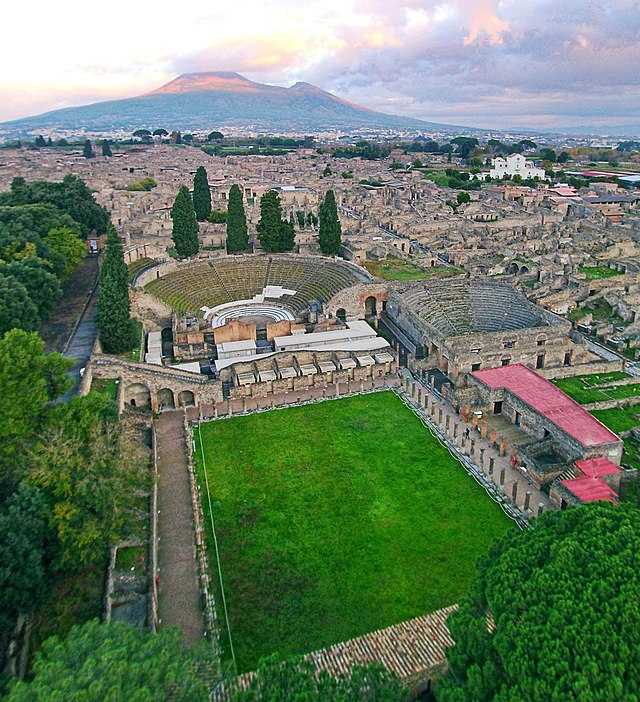
Pompeii
Ancient city near modern Naples, Italy / From Wikipedia, the free encyclopedia
Dear Wikiwand AI, let's keep it short by simply answering these key questions:
Can you list the top facts and stats about Pompeii?
Summarize this article for a 10 year old
Pompeii[lower-alpha 1] was an ancient city in what is now the comune (municipality) of Pompei, near Naples, in the Campania region of Italy. Along with Herculaneum, Stabiae, and many surrounding villas, the city was buried under 4 to 6 m (13 to 20 ft) of volcanic ash and pumice in the eruption of Mount Vesuvius in 79 AD.
 View of Pompeii and Mount Vesuvius | |
| Location | Pompei, Metropolitan City of Naples, Campania, Italy |
|---|---|
| Coordinates | 40°45′0″N 14°29′10″E |
| Type | Settlement |
| Area | 64 to 67 ha (170 acres) |
| History | |
| Founded | 7th–6th century BC |
| Abandoned | AD 79 |
| Site notes | |
| Website | www |
| Official name | Archaeological Areas of Pompeii, Herculaneum, and Torre Annunziata |
| Type | Cultural |
| Criteria | iii, iv, v |
| Designated | 1997 (21st session) |
| Reference no. | 829 |
| Region | Europe |
Largely preserved under the ash, Pompeii offers a unique snapshot of Roman life, frozen at the moment it was buried,[1] as well as insight into ancient urban planning.[2][3] It was a wealthy town of 10,000 to 20,000 residents at the time it was destroyed.[4] It hosted many fine public buildings and luxurious private houses with lavish decorations, furnishings and artworks, which were the main attractions for early excavators; subsequent excavations have found hundreds of private homes and businesses reflecting various architectural styles and social classes, as well as numerous public buildings. Organic remains, including wooden objects and human bodies, were interred in the ash; their eventual decay allowed archaeologists to create moulds of figures in their final moments of life. The numerous graffiti carved on outside walls and inside rooms provide a wealth of examples of the largely lost Vulgar Latin spoken colloquially at the time, contrasting with the formal language of classical writers.
Following its destruction, Pompeii remained largely undisturbed until its rediscovery in the late 16th century. Major excavations did not begin until the mid-18th century, which marked the emergence of modern archeology;[5] initial efforts to unearth the city were haphazard or marred by looting, resulting in many items or sites being damaged or destroyed.[6] By 1960, most of Pompeii had been uncovered but left in decay;[7] further major excavations were banned or limited to targeted, prioritised areas. Since 2018, these efforts have led to new discoveries in some previously unexplored areas of the city,[8][9][10][11] including a banquet hall adorned with rare, well preserved frescoes depicting various mythological scenes and figures.
Pompeii is a UNESCO World Heritage Site, owing to its status as "the only archaeological site in the world that provides a complete picture of an ancient Roman city."[12] It is among the most popular tourist attractions in Italy, with approximately 2.5 million visitors annually.[13][14]
